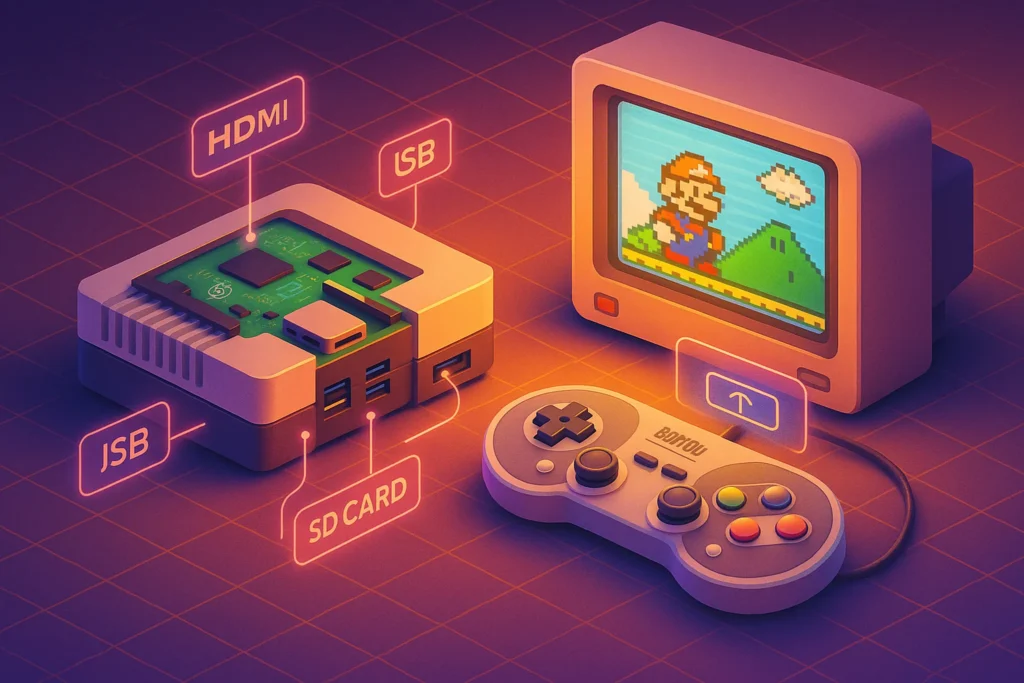🚨 Why Most Lead Magnets Fail
Marketers love talking about lead magnets, but let’s be honest—most of them don’t work. The problem isn’t volume; it’s relevance. Too many businesses create generic eBooks or tired checklists that attract clicks but don’t convert into loyal subscribers or customers.
The real issue is the quality vs. conversion gap. A free PDF that doesn’t solve a pressing problem won’t motivate sign-ups. A webinar that feels like a sales pitch won’t build trust. Audiences today are overloaded with freebies, which means only magnets with true value and flawless delivery stand out.
💡 Nerd Tip: Don’t ask, “What can I give away?” Ask, “What problem can I solve instantly for my ideal customer?”
For a broader look at how AI tools can accelerate list-building, check Ultimate Guide to Building an Email List with AI Tools.
📚 What Is a Lead Magnet (and Why It Still Works)?
A lead magnet is a high-value piece of content or resource offered in exchange for a prospect’s contact information, usually an email. Despite being one of the oldest tricks in the marketing playbook, it still works—because it builds trust before asking for a sale.
In the marketing funnel, lead magnets sit at the top-to-middle transition point. They attract interest, qualify audiences, and create a bridge into email nurturing or CRM-driven follow-ups. Think of them as the handshake before the pitch.
And the data backs this up: according to industry research, businesses that use effective lead magnets see a 34% higher opt-in rate than those that don’t. When designed strategically, they don’t just collect emails—they build relationships.
For more on how this integrates into funnels, see Sales Funnel Software Showdown for tools that support end-to-end conversion.
🎯 Formats That Convert Best
Not all lead magnets are created equal. Here are the formats that consistently drive conversions:
eBooks & Guides
Long-form resources work when they address a specific pain point. A vague “Ultimate Guide” won’t cut it. But a sharp, focused guide like “10 Landing Page Hacks That Increased CTR by 42%” can pull strong conversion numbers.
Checklists & Templates
These are quick wins for audiences who don’t have time to read. Checklists and ready-to-use templates offer immediate value and are often shared within teams, multiplying reach.
Webinars & Video Trainings
Live or pre-recorded, webinars establish authority fast. They allow interactive Q&A, which increases trust. Conversion rates on webinar registrations often range from 20–40%, making them high performers.
Free Tools / Trials
Software companies thrive on this model. Giving prospects hands-on experience—whether a 7-day trial or a limited free tool—turns curiosity into stickiness.
Interactive Quizzes
Quizzes combine personalization with entertainment. They also deliver segmented leads, making follow-up emails hyper-targeted.
💡 Nerd Tip: Don’t chase every format. Pick one that aligns with your customer journey and double down on optimizing it.
🛠️ Tools to Create Lead Magnets
Choosing the right tool makes the difference between a “meh” freebie and a professional, high-converting asset.
Canva – Perfect for visually polished eBooks, templates, and checklists. Easy to brand with your colors and fonts.
-
Pros: Intuitive, huge template library, fast turnaround.
-
Cons: Limited interactivity.
Beacon – Designed specifically for lead magnet creation. It turns blog posts into professional PDFs in minutes.
-
Pros: Niche-focused, drag-and-drop builder, great for marketers.
-
Cons: Subscription required for full features.
Typeform – Ideal for quizzes and interactive forms. Clean design and integrations with CRMs make it conversion-friendly.
-
Pros: Interactive, user-friendly, mobile-first.
-
Cons: Costs rise with scale.
Notion – Increasingly popular for free templates. Creators share Notion-based lead magnets that feel both practical and modern.
-
Pros: Trendy, easy to share, real usability.
-
Cons: Less polished visually compared to Canva or Beacon.
💡 Nerd Tip: If you want to scale, pick tools that integrate directly with your CRM or email platform.
For a list of broader platforms, our review of 10 Best Email Marketing Tools is a great companion resource.
🚚 Delivery Strategies That Work
A strong lead magnet is useless without the right delivery strategy.
-
Email automation sequences: The lead magnet is the start. A well-crafted follow-up sequence nurtures subscribers, delivers extra value, and transitions into offers. See CRM vs. Marketing Automation for insights on managing this effectively.
-
Content upgrades: Embedding lead magnets inside blog posts converts better than generic “subscribe” boxes. Relevance is key—offer a checklist inside a post about that exact topic.
-
Landing pages & popups: Dedicated landing pages with single CTAs remain powerful. Exit-intent popups are also effective, capturing leads before they leave.
-
Social distribution: Share lead magnets on LinkedIn, Twitter, or even in community forums. When positioned as resources, they spread organically.
💡 Nerd Tip: Always test your delivery timing. A popup appearing 5 seconds in may annoy users, but at 25 seconds it can capture intent-driven leads.
📈 Case Study: Lead Magnet with 42% Conversion
A B2B SaaS company offered a simple checklist titled “5 Steps to Cut Customer Churn in 30 Days.” The asset was distributed through a landing page supported by LinkedIn ads. The results:
-
42% landing page conversion rate.
-
3,000 new leads within 60 days.
-
$120k in pipeline opportunities traced back to the checklist.
What made it work wasn’t complexity—it was specificity. The checklist solved a problem the audience cared about and was easy to consume.
💡 Nerd Tip: The smaller the promise, the stronger the conversion—“solve one thing fast” beats “big vague guide.”
🛠️ Step-by-Step Implementation
Here’s how to bring it all together:
-
Select the right format. Match the format to your audience’s preference and problem.
-
Design the magnet. Use Canva, Beacon, or Notion to package it professionally.
-
Pick a tool for delivery. Integrate with your email platform or CRM.
-
Build your delivery path. Landing page, popup, or embedded upgrade.
-
Follow up. Send a sequence that nurtures leads into opportunities.
💡 Nerd Tip: Never stop at “download delivered.” Always have a next step for your new subscribers.
For advanced marketers testing AI in content personalization, explore Adobe AI Agents for Marketing to see how automation can supercharge delivery.
⚡ Ready to Build High-Converting Lead Magnets?
Use tools like Canva, Beacon, and Typeform to design professional magnets that deliver. Start creating assets your audience can’t resist.
🧠 Psychology Behind High-Converting Lead Magnets
At the core of every successful lead magnet lies psychology. People don’t give away their email addresses lightly; they only do so when the perceived value outweighs the friction. Scarcity plays a huge role—when a resource is framed as “limited time” or “exclusive,” the urgency pushes more sign-ups. Authority also matters: when the asset is presented as coming from an expert or trusted brand, audiences feel more confident sharing their information. Finally, quick wins are critical. A checklist that delivers an instant improvement will always convert better than a 50-page report that feels overwhelming.
The difference between a lead magnet that gets downloaded but never opened versus one that actually builds loyalty is usability. “Shelfware” lead magnets (eBooks that rot in inboxes) create no long-term trust. But magnets that solve a problem in under five minutes—like a template or calculator—build credibility and pave the way for deeper engagement.
💡 Nerd Tip: If your audience can’t use your lead magnet within 15 minutes of downloading it, you’re leaving conversions on the table.
📊 Metrics & ROI Tracking for Lead Magnets
Measuring performance is the only way to know if a lead magnet deserves to scale. The first metric to track is conversion rate (opt-in %), which shows how many visitors exchange their email for your asset. A healthy benchmark for lead magnet opt-ins is 20–30%.
Next is cost per lead. Divide ad spend or promotional costs by the number of sign-ups. If each lead costs more than the value they eventually generate, it’s time to pivot.
Finally, the lead-to-customer rate closes the loop. It’s not enough to capture emails—you need to see how many subscribers eventually purchase or engage in revenue-driving actions. By combining these metrics, marketers can calculate ROI and decide whether a magnet is worth repeating or needs to be reimagined.
💡 Nerd Tip: A lead magnet with a lower opt-in rate but higher lead-to-customer conversion may outperform one that looks “popular” on the surface.
🧪 A/B Testing Lead Magnet Formats
Even the best assets need optimization. A/B testing lets marketers refine their magnets by experimenting with titles, formats, and calls-to-action. For example, a direct title like “Download Your Free Sales Funnel Checklist” may outperform a vague one like “Get Our Guide.” Similarly, a one-page checklist may convert better than a 40-page eBook because it promises speed and simplicity.
Simple tools like Google Optimize or built-in features in ConvertKit make A/B testing accessible even for small teams. By running experiments on format, design, or even delivery (popup vs. landing page), marketers can gradually push conversion rates higher.
💡 Nerd Tip: Never assume the longer asset will convert better—many times, the “short, specific, and instantly useful” option wins the test.
🎯 Personalization & Segmentation
One-size-fits-all lead magnets are slowly losing effectiveness. Personalization ensures the magnet matches different buyer personas. For example, a SaaS company targeting SMBs might create a simplified version of its resource for solopreneurs and a more advanced technical version for IT managers. Both solve similar problems but speak the language of different audiences.
Segmentation can also happen at the delivery stage. Using email marketing tools, you can tag leads based on which magnet they downloaded, then follow up with tailored content. This makes the user journey feel seamless and hyper-relevant.
💡 Nerd Tip: The closer your lead magnet feels like it was “made just for me,” the higher your conversion and engagement rates will climb.
⚖️ Legal & Trust Factors
Trust is the foundation of effective lead generation. With GDPR and CCPA regulations, transparency about how you’ll use subscriber data isn’t optional—it’s mandatory. Every landing page offering a lead magnet should clearly explain what users can expect after providing their email. If they’re opting into a newsletter as well, it must be explicitly stated.
Design also influences trust. Pages that look “spammy,” with over-the-top promises or hidden disclaimers, immediately hurt conversions. Clean design, straightforward messaging, and clear privacy policies all signal credibility. In fact, transparency itself can increase conversions because it reassures users they won’t be tricked.
💡 Nerd Tip: Add a simple line below your form like, “We’ll never spam you—just one weekly tip-packed email.” Small reassurances drive big trust.
🚀 Future Trends in Lead Magnets
Lead magnets aren’t static—they’re evolving with audience behavior and technology. The era of micro-lead magnets is here: instead of 40-page eBooks, marketers are seeing better conversions with one-page cheat sheets or swipe files. These deliver immediate value without overwhelming the reader.
AI is also reshaping lead magnets. Imagine AI-personalized assets that adapt to the user’s input—like a GPT-powered content calendar generator or a tailored growth roadmap. These magnets feel unique and are nearly impossible to ignore.
Finally, interactive lead magnets are gaining traction. Quizzes, calculators, and gamified tools engage users longer, deliver personalized results, and create natural pathways into segmented follow-ups. In fact, interactive formats often see 2–3x higher conversion rates compared to static PDFs.
💡 Nerd Tip: The future belongs to magnets that combine speed, personalization, and interactivity. Start experimenting now to stay ahead.
📬 Want More Smart AI Tips Like This?
Join our free newsletter and get weekly insights on AI tools, no-code apps, and future tech—delivered straight to your inbox. No fluff. Just high-quality content for creators, founders, and future builders.
🔐 100% privacy. No noise. Just value-packed content tips from NerdChips.
🧠 Nerd Verdict
Lead magnets still sit at the heart of conversion-driven marketing. When crafted with precision, they attract not just leads, but qualified prospects who actually want to engage.
NerdChips sees lead magnets as one of the most reliable ways to build an email list, nurture trust, and fuel long-term growth. The key is specificity, value, and flawless delivery.
❓ Nerds Ask, We Answer
💬 Would You Bite?
If one lead magnet could double your email sign-ups, which format would you test first—an eBook, a checklist, or a webinar?
Share your thoughts below. 👇
Crafted by NerdChips for marketers and creators who want every lead to count.



